Education
Postmodern Creationism in Academia: Why Evergreen Matters
The central problem with the university administration’s opinion column was that none of the accusations were relevant to the fieldwork and research in question.
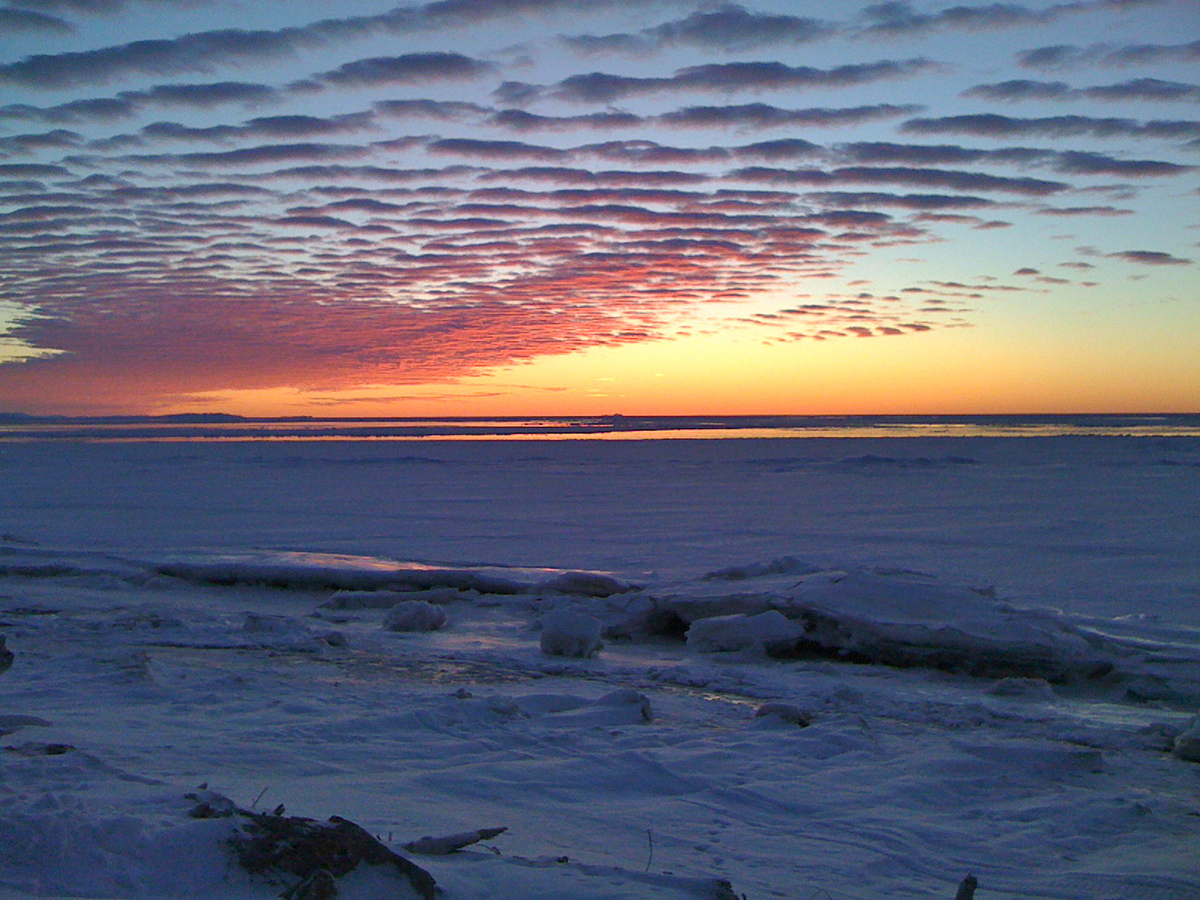
In the aftermath of the persecution of biology professor Bret Weinstein at Evergreen State College, we need to pause and look back. With the Higher Superstition exposé by Gross and Levitt in 1994, many of us assumed that the postmodern fashion would begin to fade. This prediction was wrong. This has prompted me to reflect on a similar suppression of academic freedom that passed virtually unnoticed years ago, when world-renowned Hopi language scholar, Ekkehart Malotki, was censored and vilified by the same inquisitorial thinking proliferating once more on American campuses.
In a recent overview of the influence of relativist and radical social-constructionist theories in academia, specifically in fields devoted to the study of indigenous languages and cultures, I called attention to a resulting crisis of scholarship and teaching. This crisis has deepened in these fields with the promotion of a pernicious version of creationism. But the current opposition to the scientific theories of human origin and migration, often ascribed to Native Americans, in reality finds its most forceful proponents in and around North American universities, among professors and intellectuals.
However, for a moment, it occurred to me that I may have overstated the influence of these unscientific theories. Perhaps the criticism was unfair.1 To the contrary, a comprehensive search reveals widespread acceptance of notions that oppose the conclusions of research on human evolution, particularly regarding the migration and dispersal of early cultures that came to populate the New World. This opposition has now become the dominant view in many departments of American Indian Studies, Indigenous Studies, Multicultural Education, Ethnic Studies, and allied fields (a broad umbrella, henceforth referred to as Cultural Studies).
The most important recent impetus for the surge in creationist ideology–within the institutions of higher learning–can be traced to the brazen attack on the theory of evolution in Red Earth White Lies by Vine Deloria Jr.2 The backdrop to the evolution-denial arguments is the politicized dismissal of the advances of modern science that are cast as “Western,” leading to, for example, creation myths being held up as contradicting the findings of evolutionary anthropology, population genetics, and archaeology.
What is the broad agreement today among experts on the origin of the indigenous peoples of the New World? The conclusion of recent findings from genomic and archaeological evidence, consistent with previous research going back many years, has decisively converged on one remaining plausible theory: that of a migratory peopling of the Americas from Eurasia, originating in turn from the first dispersal of Homo sapiens from our ancestral homeland in Africa. In a recent breakthrough, the complete genome sequencing of the remains of an infant boy, Anzick-1, from approximately 12,600 years ago, discovered in Montana, reconfirms the Asian ancestry of Native Americans.3
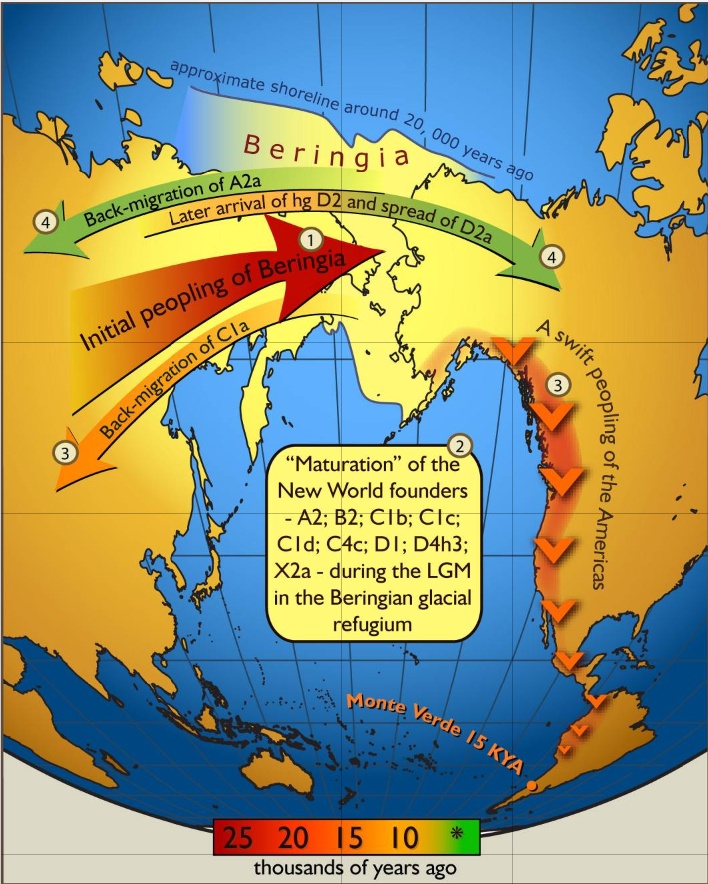
Regarding a number of the details, there is still much work to be done: the dispersal and branching off of populations in the exodus from Africa, contact among them along the way, the timing of the great migrations, the geographical routes and methods of travel, and how many migratory waves entered the Western Hemisphere from Siberia. However, the idea of a separate and independent emergence of the human lineage in the New World, by means of some kind of non-biological genesis, exists–like the biblical account of Eden–only in the realm of legend. An implausible alternative “evolutionary account,” postulating a separate and independent American emergence of Homo sapiens branching off from a common primate ancestor, is plainly not supported by the evidence.
Nevertheless, Deloria called into question the scientific consensus on the colonization of the Americas as an imposition of so-called “Western” knowledge. Explicitly, the argument consisted of a creationist, Young Earth, account of human origin. North American oral tradition legends allegedly describe dinosaurs; that is, humans bore eyewitness to the giant reptiles, the stegosaurus, in particular (pp. 211—234). Red Earth White Lies rejects in principle the Siberian migration that populated the New World, and rejects the advances of science on this question as a “hilarious farce” (p. 182). These extraordinary claims caught many people’s attention at the time. What should strike us as more extraordinary still is the apparent deepening of their influence in Cultural Studies over the years, divided between two responses:
- Outright acceptance – the claim that the “Bering Strait theory” disparages the creation stories of indigenous people. Land rights and access to natural resources are presented as being tied to the idea that Native American communities “have always been here.”
- Carefully worded distancing from the most extravagant creationist assertions that nonetheless tries to deny the research consensus. The work of scientists is qualified as beholden to the “academic establishment,” “as serving hegemonic interests,” or as “disrespectful” of “traditional knowledge,” and “used to colonize and dominate indigenous communities.”4
Also remarkable is the repudiation, based on serious misunderstanding, of the “Bering Strait theory” in peer reviewed journal articles, official curriculum guides for Native American education, and mass circulation newspapers. As part of an ongoing series focused on discrediting the migratory origin of the first Americans, Indian Country Today quoted Yale professor and director of the Native American Cultural Center, Theodore Van Alst, as defending the theories of Deloria: that “[The Bering Strait Theory] is used to support the notion that we’re just an earlier set of people on a long continuum of immigrants…There needs to be a real reassessment of this thing.”5 The common theme that sustains evolution/migration-denial is a purported opposition between “Western knowledge” and “indigenous knowledge.”
We are steadily advancing toward a more complete account of the human colonization of the Americas, but no finding in the current debates among researchers casts any doubt on the central fact of the colonization. True, research has not definitively identified the exact route, or routes, or their timing through Beringia, from the Old World to the New. Evidence exists that the first or primary route may not even have been overland, but along the coast. We still can’t say with certainty whether initial arrival estimates of 15—16,000 years ago are correct, or whether the first successful migrants entered the Americas perhaps 15,000 years earlier. Archaeological data from research sites in North and South America cannot yet discard either of these hypotheses. However, no credible researcher questions the evolution/migration-from-Africa-subsequent-peopling-of-the-Americas theory, and no credible scientific account of the evidence contradicts it.
In the case of a number of weak commentaries on the controversy, timidity and equivocation in a transparently forced attempt to appear balanced are commonplace. For example, while pointing out defects in the creationist legend of the peopling of the Americas, authors introduce confusion and misinformation by imputing unspecified prejudicial motives to scientists who set aside versions from the oral tradition of events related to migration from Asia 30,000 to 10,000 years ago. On the one hand, the cautious critique takes issue with the most fantastic assertions of Deloria, but then gives credit to Red Earth and White Lies, as it purportedly represents “a blistering attack on Western science” (p. 168)6 – note to the author: in this discussion, the idea of “Western science” is as incoherent as the category “Western knowledge.”
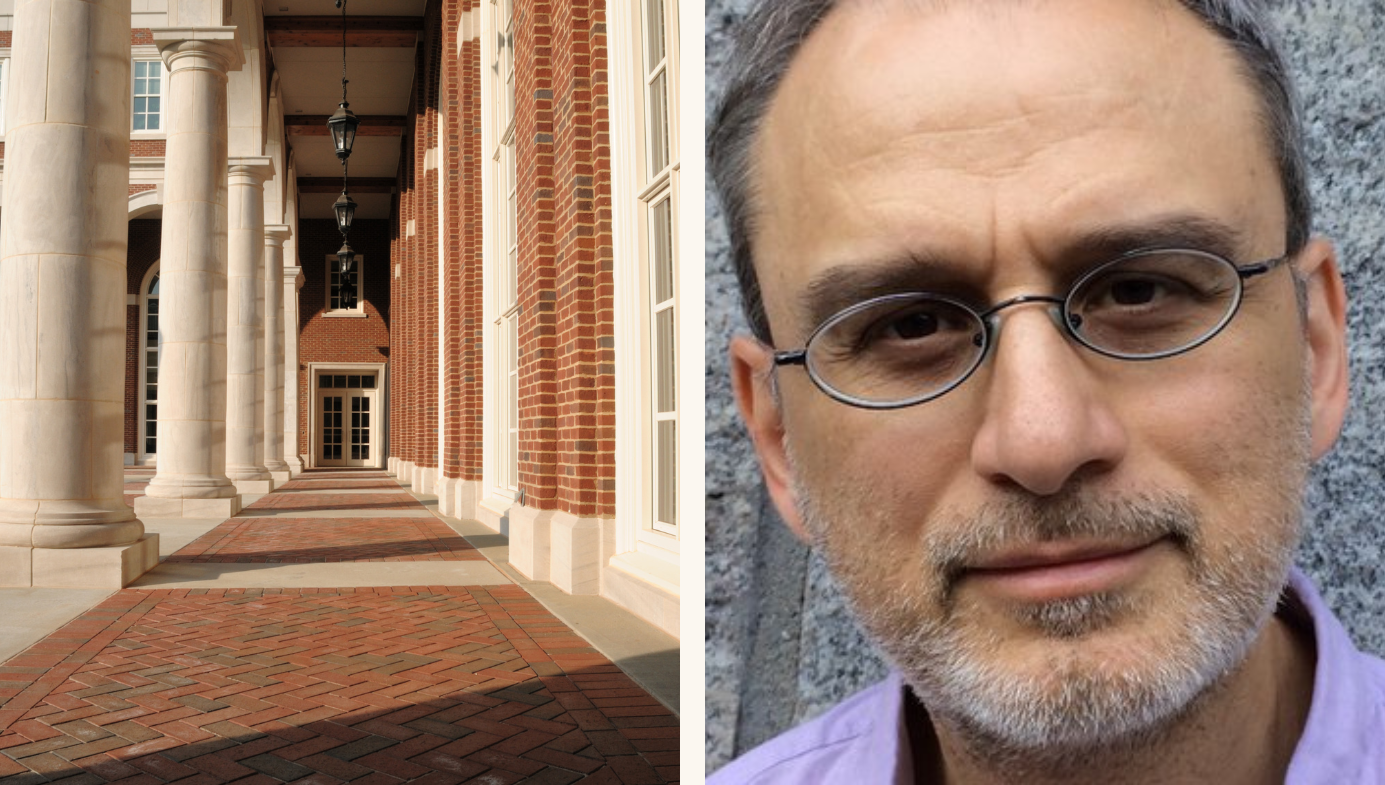
The difficulty that some well-intentioned authors have in clearly explaining the error lies in the failure to understand an underlying fallacy: the confusing comparison between so-called “Western science” and “indigenous knowledge.” The confusion fostered by this false dichotomy follows from the postmodern rejection of the scientific method; that findings and conclusions of research are relative to the ideological, political, class or ethnic point of view of individuals and social groups. Contrary to this view, objectivity in the assessment of empirical findings is the foundation of all scientific and rational inquiry, not an arbitrary imposition for the purpose of excluding considerations of “context.” Researchers do not try to integrate spiritual/religious belief systems and mythical cosmologies into their methods because scientific investigation strives to explain natural phenomena. The worldview of religion is concerned with the supernatural.
The reason why legendary oral tradition accounts of human origin cannot be integrated with the findings of archaeology and population genetics, and why researchers in these fields do not attempt to do so, is actually simple and straightforward. Genesis myths, whether they come from the Old Testament, the Koran, or some other archaic source, do not provide the kind of information that can either confirm or disconfirm empirical evidence. They cannot bear on the findings about events dating between 60,000 and 10,000 years ago, one way or the other. While disagreement continues to exist among scientists on secondary questions, these are unrelated to the general agreement on human origins and the provenance of human migrations, from Africa à Eurasia à the New World. That is because, among working geneticists and archaeologists, there is no longer any disagreement on this last question.
Examples of publications for educators and curriculum guides for teacher preparation programs at state colleges testify to a discriminatory double standard for science education. Endorsement of Deloria’s pseudo-scientific ideas and similar notions of New World genesis can be found in a unit of study from Evergreen, as if the promotion of these fictional versions of human origin were “culturally responsive.”
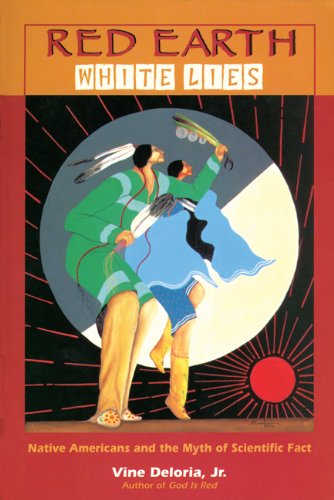
A related science-denial approach consists of favorably citing works that argue for one or another theory of creationism, omitting mention of their most outlandish details. Authors then try to discredit the scientific consensus on evolution and migration and the accepted procedures of empirical research in the field. This attempt at relativizing the conclusions of research conveniently and ambiguously coincides with the anti-evolution arguments themselves. The false portrayal is one of generalized disagreement among competing and speculative hypotheses.7 An example is the Northwest Indian Applied Research Institute of Evergreen State College that offers a “culturally appropriate curriculum” for Native American students. With course readings featuring the creationist Red Earth White Lies and other non-academic fringe sources, the syllabus specifies the criteria for evaluation of student learning: “Since this issue has no wrong answers because of the fluctuation in scientific reasoning, creative writing should be embraced as having the potential to be as accurate as the current scientific opinion.”
One of the roots of the crisis in Cultural Studies is the union, now fully consummated, of radical social constructionism and a version of postmodern relativism. In contrast, researchers who base their hypotheses on objective empirical findings, and who apply the research methods of their respective field, strongly object to the idea that science is just one among different kinds of alternative “narrative.” They also object to the self-serving postmodern notion that science is a socially constructed ideology of dominant classes, colonizers, and “hegemonic interests.” For many cultural critics of cognitive science, to take one example, there is a strong attraction to the idea of an almost limitless malleability of human nature, achieved by socialization (a kind of neo-behaviorism). In turn, they find research in the science of genetics, evolutionary modeling of human origins, and hypotheses about universal and cross-cultural foundations deeply troubling, even unacceptable.
If the findings of empirical research are not confirmed or disconfirmed by objective criteria of evidence, but instead are socially constructed by the dominant classes, which, as claimed, scientists serve, then our knowledge of the natural world cannot advance. From this point of view, knowledge is forever relative, dependent on the confrontation of ideological and political interests. Belief systems and political programs of social groups compete, each with their own knowledge system, each “epistemology” with its own equally valid interpretation of facts. All is relative to the understandings of the corresponding ethnic and cultural identities or social classes. The consensus of (“dominant,” “colonial,” “privileged”) scientific research has no special claim to validity over theories of any other interest group, including mystico/religious beliefs and legendary accounts of events passed via the oral tradition across many hundreds of generations. “Local knowledge,” “indigenous knowledge,” and “traditional knowledge” are elevated to the same level of reliability and validity because no inquiry can be objective and independently verifiable. In this sense, knowledge and the methods of acquiring knowledge are, in fact, arbitrary and radically indeterminate. All are dependent on context, historical conjuncture, and the relationship of forces in a given time or place. The “struggle,” then, consists of which alliance of ethnic and social class forces will impose its “paradigm” as acceptable – more consistent with one or another political program for the organization of society.
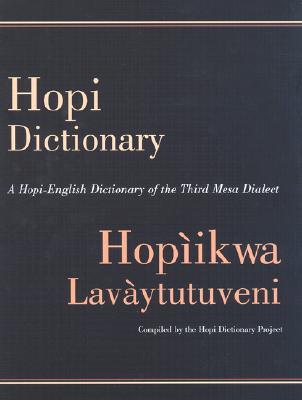
Following from the above paradigm shift, the ideology-over-science method logically lends itself to outside politicized control over research and independent scholarship, imposing dangerous restrictions on academic freedom. This brings us back to the emblematic case of Hopi language scholar, Ekkehart Malotki, which has been kept from public scrutiny for over 15 years. Student editors at Northern Arizona University’s The Lumberjack daringly broke the story of the administrative censorship of professor Malotki, author of what is likely the most widely cited study of the Hopi language. Malotki’s monograph, Hopi Time, demonstrated that Benjamin Whorf’s famous linguistic relativity hypothesis did not apply in this case. He showed that Whorf’s claim about Hopi conceptions of time being fundamentally different is not correct, and that, in fact, the Hopi language expresses temporal relations more precisely than they appeared, superficially, to Whorf. One of the most prolific compilers (in bilingual format) of traditional narrative, Malotki’s most notable achievement was to form part of the team of authors who published the Hopi Dictionary of the Third Mesa Dialect.8 At over 900 pages, with 29,394 entries, it is the most complete and authoritative work in the category of indigenous language documentation.
Evidently under pressure, the university administration removed all copies of an anthology of traditional narrative edited by Malotki from the campus bookstore (by buying them up). At the same time, Malotki was scheduled to deliver an academic talk examining evidence gathered by ASU archaeologists Christy and Jacqueline Turner of early warfare and cases of cannibalism among the Anasazi. Why this study9 was even considered controversial is just one more testimony to the closing of the academic mind on campus. As a technical report of field research, available to specialists and general readers for debate, we should be bewildered that a planned discussion of its findings prompted censorship by a university in the United States.
The administration demanded that the title of the talk be changed (in the end it was cancelled). In an unprecedented response to The Lumberjack report, the (former) NAU president attacked Malotki (without mentioning his name), and berated the student writers who had defended him. Under its Orwellian title, “Professor’s actions undermine freedom,” the column (February 28—March 13 issue) insinuated that Malotki’s data was fabricated or manipulated, and that the narratives were obtained from assistants and informants “without their knowledge and consent.” Making reference to “abuse of human subjects,” the insinuation was that “serious questions” had been raised: “What happens when researchers make their way into a community…?” (emphasis added) “Those few careless and arrogant enough to violate the trust of their fellow human beings… tarnish the reputation of the academy…”
The central problem with the university administration’s opinion column was that none of the accusations were relevant to the fieldwork and research in question. Not only did the administration not name the allegedly guilty professor or the offended party, but it provided no evidence for the charges, nor evidence of a violation of university policy or law of any kind. No protection of human subjects provision was violated in the work with the indigenous narrators, and no examples of “abuse,” fabrication of data, or deception were given, because in the work of Malotki, there was no basis in fact for such alleged misdeeds. The fieldwork was completed many years earlier and had been published by a prestigious university press six years prior to the attempt at censorship by the university.
So why did the vague allegations, made publicly in the pages of the student newspaper by the highest-ranking administrator of the institution, coincide with the announcement of the planned forum on Anasazi archaeology? Readers should consult the report by University of Arizona linguist Kenneth Hill regarding a related controversy developing at the same time, which might have had some bearing on the NAU case.10 Is it possible that there was a link between the unfair criticisms made against the authors of the dictionary and the witch-hunt of Malotki? In the following issue of The Lumberjack, Malotki defended himself against the innuendo, to no avail. Sadly, most of his colleagues remained silent. From Cultural Studies, some even participated in the slander.11
For indigenous communities themselves, the questions under investigation by the scientists mentioned in this article are of even more immediate importance. More than anyone else, communities have a vested interest in supporting the work of research that advances our understanding of human evolution and early migration, genetics, and archaeology. The interests of indigenous communities are not served in any way by the anti-scientific speculation of radical social constructivists or the promulgation of alternate realities still popular in many university departments. Pseudoscience, disguised as multiculturalism and concern for indigenous rights, is a false solution to the problems and challenges that communities face.
One of the most urgent challenges, today, is that of correcting the double standard in education that discriminates against Native American students, in effect, maintaining a lower standard for Native American students. While it would be truly exceptional and aberrant to find the science curriculum of a typical high school or university contaminated by creationist versions of human origin, the same cannot be said today for schools on Indian reservations and programs in American Indian Studies, Indigenous Studies, and Multicultural Education. The name for looking the other way from this new version of separate-but-equal, in plain English, is: paternalism. Greater understanding and further progress in other areas, such as the preservation of linguistic, literary, and artistic heritage, will depend on developing a strong partnership between local educators and scientists, other empirical researchers, and humanities scholars who apply rational methods of inquiry. These are scientists and scholars from within the community and from other communities.
References
[1] Francis, N. (2017). Bilingual and multicultural perspectives on poetry, music and narrative: The science of art. Rowman & Littlefield.
[2] Deloria, V. Jr. (1997). Red Earth white lies: Native Americans and the myth of scientific fact. Fulcrum.
[3] Raff, J. and Bolnick D. (2014). Genetic roots of the first Americans. Nature, 506: 162—163.
[4] Hermes, M. Bang, M. and Marin, A. (2012). Designing indigenous language revitalization. Harvard Educational Review, 82: 381—402.
[5] Moya-Smith, S. (2013). Obama’s “Native American” reference during immigration speech sparks Bering Strait Twitter surge. Indian Country Today, January, 2013.
[6] Regal, B. (2004). Human evolution: A guide to the debates. ABC-CLlO.
[7] Richardson, T. (2007). Vine Deloria Jr. as a philosopher of education: An essay of remembrance. Anthropology & Education Quarterly, 38: 221—230.
[8] Hopi Dictionary Project (1998). Hopi Dictionary/Hopìikwa Lavàytutuveni: A Hopi-English Dictionary of the Third Mesa Dialect. University of Arizona Press.
[9] Turner, C. and Turner, J. (1999). Man corn: Cannibalism and violence in the prehistoric American Southwest. University of Utah Press.
[10] Hill, K. (2002). On the publishing of the Hopi dictionary. In Making dictionaries: Preserving indigenous languages of the Americas (pp. 299—311). University of California Press.
[11] Readers can consult the full record of the events in The Lumberjack, issues: February 21—27, February 28—March 13, March 14—20, March 21—27, and April 4—10 (2001), including this author’s defense of the Lumberjack editors. The February 21—27 issue reported that the confiscated/purchased copies Malotki’s book were “donated” to the Hopi tribal authorities, a report that was never denied.






